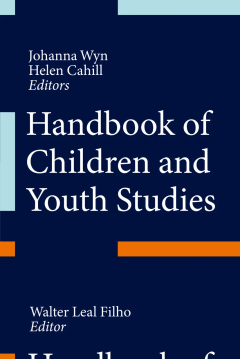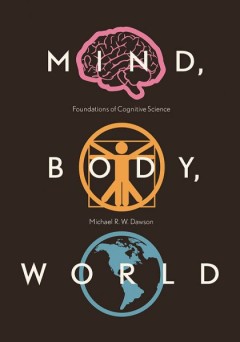Filter by

From Data Modeling to Knowledge Engineering in Space System Design
The technologies currently employed for modeling complex systems, such as aircraft, spacecraft, or infrastructures, are sufficient for system description, but do not allow deriving knowledge about the modeled systems. This work provides the means to describe space systems in a way that allows automating activities such as deriving knowledge about critical parts of the system’s design, evaluat…
- Edition
- -
- ISBN/ISSN
- 978-3-7315-0720-8
- Collation
- -
- Series Title
- -
- Call Number
- 620 HEN f

Drought stress tolerance in plants. Vol 1, Physiology and biochemistry
Abiotic stress adversely affects crop production worldwide, decreasing average yields for most of the crops to 50%. Among various abiotic stresses affecting agricultural production, drought stress is considered to be the main source of yield reduction around the globe. Due to an increasing world population, drought stress will lead to a serious food shortage by 2050. The situation may become wo…
- Edition
- -
- ISBN/ISSN
- 9783319288994
- Collation
- xix, 526 pages
- Series Title
- -
- Call Number
- 630

Salt and drought stress tolerance in plants : signaling networks and adaptive…
This book presents various aspects of salt and drought stress signaling in crops, combining physiological, biochemical, and molecular studies. Salt and drought stress are two major constraints on crop production worldwide. Plants possess several mechanisms to cope with the adverse effects of salt and drought. Among these mechanisms, stress signaling is very important, because it integrates and …
- Edition
- -
- ISBN/ISSN
- 9783030402778
- Collation
- x, 403 pages
- Series Title
- -
- Call Number
- 630

Drought stress in Maize (Zea mays L.) : effects, resistance mechanisms, globa…
This book focuses on early germination, one of maize germplasm most important strategies for adapting to drought-induced stress. Some genotypes have the ability to adapt by either reducing water losses or by increasing water uptake. Drought tolerance is also an adaptive strategy that enables crop plants to maintain their normal physiological processes and deliver higher economical yield despite…
- Edition
- -
- ISBN/ISSN
- 9783319254425
- Collation
- -
- Series Title
- -
- Call Number
- 580

Aerosol-Cloud Interactions from Urban, Regional, to Global Scales
The studies in this dissertation aim at advancing our scientific understandings about physical processes involved in the aerosol-cloud-precipitation interaction and quantitatively assessing the impacts of aerosols on the cloud systems with diverse scales over the globe on the basis of the observational data analysis and various modeling studies. As recognized in the Fifth Assessment Report by t…
- Edition
- Ed. 1
- ISBN/ISSN
- 978-3-662-47175-3
- Collation
- XXI, 86
- Series Title
- Springer Theses
- Call Number
- 551.6 WAN a

Handbook of Climate Change Adaptation
The Handbook of Climate Change Adaptation addresses the scientific, social, political and cultural aspects of climate change in an integrated and coherent way. The multi-volume reference focuses on one of the key aspects of climate change: adaptation and how to handle its impacts on physical, biotic and human systems, analyzing the social and normative scientific concerns and presenting the too…
- Edition
- -
- ISBN/ISSN
- 978-3-642-38669-5
- Collation
- XL, 2198
- Series Title
- -
- Call Number
- 320 HAN

Mind, Body, World Foundations of Cognitive Science
Examples, cases, and research findings taken from the wide range of phenomena studied by cognitive scientists effectively explain and explore the relationship among the three perspectives. Intended to introduce both graduate and senior undergraduate students to the foundations of cognitive science, Mind, Body, World addresses a number of questions currently being asked by those practicing in th…
- Edition
- -
- ISBN/ISSN
- 9781927356173.01
- Collation
- -
- Series Title
- -
- Call Number
- 506 pages

Information Theory in Neuroscience
As the ultimate information processing device, the brain naturally lends itself to being studied with information theory. The application of information theory to neuroscience has spurred the development of principled theories of brain function, and has led to advances in the study of consciousness, as well as to the development of analytical techniques to crack the neural code—that is, to un…
- Edition
- -
- ISBN/ISSN
- 978-3-03897-665-3
- Collation
- -
- Series Title
- -
- Call Number
- 500 INF

Microwave Indices from Active and Passive Sensors for Remote Sensing Applicat…
Past research has comprehensively assessed the capabilities of satellite sensors operating at microwave frequencies, both active (SAR, scatterometers) and passive (radiometers), for the remote sensing of Earth’s surface. Besides brightness temperature and backscattering coefficient, microwave indices, defined as a combination of data collected at different frequencies and polarizations, revea…
- Edition
- -
- ISBN/ISSN
- -
- Collation
- -
- Series Title
- -
- Call Number
- 500 MIC

From Bricks to Brains The Embodied Cognitive Science of LEGO Robots
From Bricks to Brains introduces embodied cognitive science, and illustrates its foundational ideas through the construction and observation of LEGO Mindstorms robots. Discussing the characteristics that distinguish embodied cognitive science from classical cognitive science, From Bricks to Brains places a renewed emphasis on sensing and acting, the importance of embodiment, the exploration of …
- Edition
- -
- ISBN/ISSN
- 9781897425787.01
- Collation
- -
- Series Title
- -
- Call Number
- 354 pages
 Computer Science, Information & General Works
Computer Science, Information & General Works  Philosophy & Psychology
Philosophy & Psychology  Religion
Religion  Social Sciences
Social Sciences  Language
Language  Pure Science
Pure Science  Applied Sciences
Applied Sciences  Art & Recreation
Art & Recreation  Literature
Literature  History & Geography
History & Geography